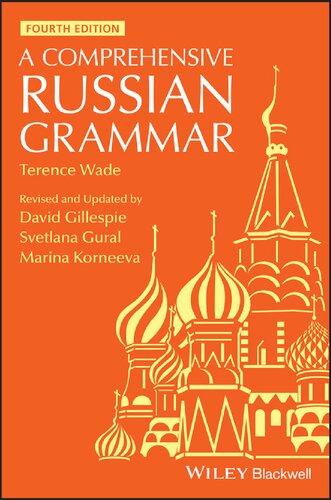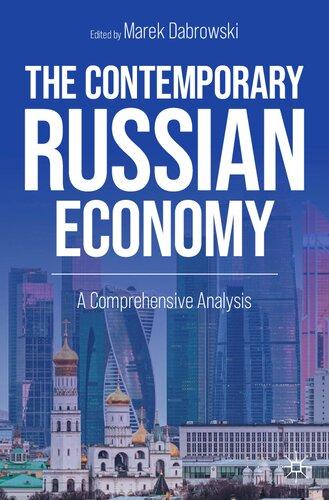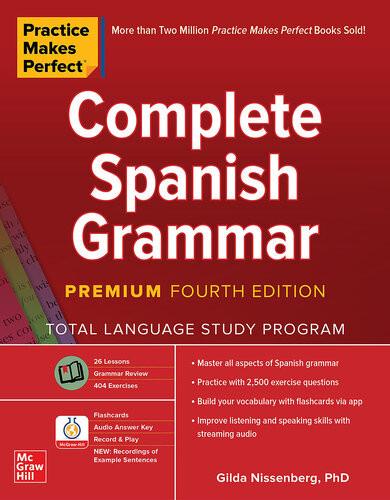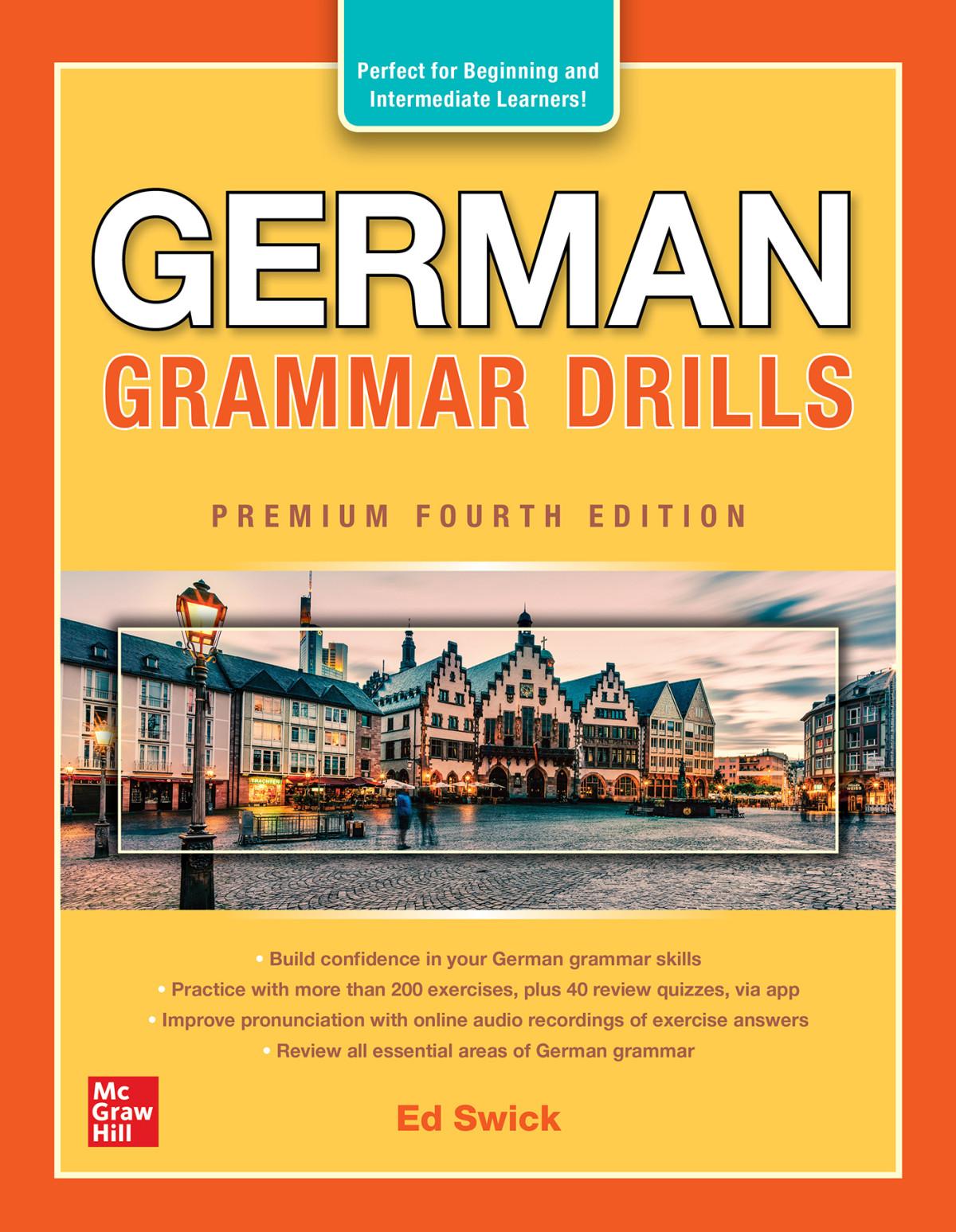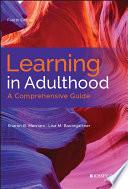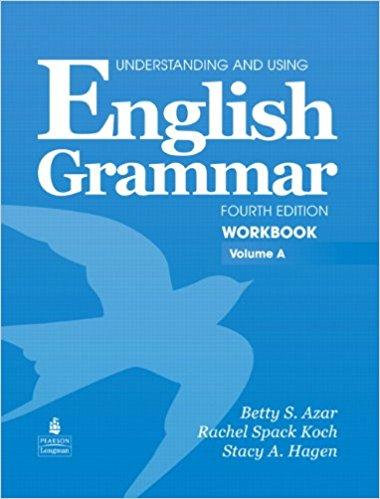A Comprehensive Russian Grammar
Fourth Edition
Terence Wade
Revised and updated by David Gillespie, Svetlana Gural and Marina Korneeva
This edition first published 2020
© 2020 Terence Wade & John Wiley & Sons Ltd
Edition History
© Terence Wade. Published by Blackwell Publishing Ltd (1e, 1992 and 2e, 2000, 3e, 2011)
All rights reserved. No part of this publication may be reproduced, stored in a retrieval system, or transmitted, in any form or by any means, electronic, mechanical, photocopying, recording or otherwise, except as permitted by law. Advice on how to obtain permission to reuse material from this title is available at http://www.wiley.com/go/permissions.
The right of Terence Wade, David Gillespie, Svetlana Gural and Marina Korneeva to be identified as the authors of this work has been asserted in accordance with law.
Registered Offices
John Wiley & Sons, Inc., 111 River Street, Hoboken, NJ 07030, USA
John Wiley & Sons Ltd, The Atrium, Southern Gate, Chichester, West Sussex, PO19 8SQ, UK
Editorial Office
The Atrium, Southern Gate, Chichester, West Sussex, PO19 8SQ, UK
For details of our global editorial offices, customer services, and more information about Wiley products visit us at www.wiley.com.
Wiley also publishes its books in a variety of electronic formats and by print‐on‐demand. Some content that appears in standard print versions of this book may not be available in other formats.
Limit of Liability/Disclaimer of Warranty
While the publisher and authors have used their best efforts in preparing this work, they make no representations or warranties with respect to the accuracy or completeness of the contents of this work and specifically disclaim all warranties, including without limitation any implied warranties of merchantability or fitness for a particular purpose. No warranty may be created or extended by sales representatives, written sales materials or promotional statements for this work. The fact that an organization, website, or product is referred to in this work as a citation and/or potential source of further information does not mean that the publisher and authors endorse the information or services the organization, website, or product may provide or recommendations it may make. This work is sold with the understanding that the publisher is not engaged in rendering professional services. The advice and strategies contained herein may not be suitable for your situation. You should consult with a specialist where appropriate. Further, readers should be aware that websites listed in this work may have changed or disappeared between when this work was written and when it is read. Neither the publisher nor authors shall be liable for any loss of profit or any other commercial damages, including but not limited to special, incidental, consequential, or other damages.
Library of Congress Cataloging‐in‐Publication Data
Names: Wade, Terence, 1930–2005, author. | Gillespie, David, 1957– author. | Gural, S. K., author. | Korneeva, Marina (Marina Aleksandrovna), author.
Title: A comprehensive Russian grammar / Terence Wade ; updated, with additional material, by David Gillespie, Svetlana Gural and Marina Korneeva.
Description: Fourth edition. | Hoboken, NJ : Wiley-Blackwell, 2020. | Series: Blackwell reference grammars | Includes bibliographical references and index.
Identifiers: LCCN 2019045086 (print) | LCCN 2019045087 (ebook) | ISBN 9781119520290 (paperback) | ISBN 9781119520320 (adobe pdf) | ISBN 9781119520283 (epub)
Subjects: LCSH: Russian language–Grammar.
Classification: LCC PG2106 .W33 2020 (print) | LCC PG2106 (ebook) | DDC 491.782/421–dc23
LC record available at https://lccn.loc.gov/2019045086
LC ebook record available at https://lccn.loc.gov/2019045087
Cover image: Nicki Averill/Wiley
Cover design by Wiley
Set in 10.5/12pt STIXGeneral by SPi Global, Pondicherry, India
Printed in Great Britain by Bell & Bain Ltd, Glasgow
To May
The Pronoun
130 Declension of the determinative pronouns caм, cáмый, вecь, вcя́кий, кáждый, вcя́чecкий
131 Caм and cáмый
132 Becь, цéлый, вcя́кий, кáждый, любóй,
133 The negative pronouns никтó, ничтó, никaкóй, ничéй. The negative particle нe
134 Hиктó
135 Hичтó
136 Hикaкóй and ничéй
137 The ‘potential’ negative pronouns нéкoгo, нéчeгo
138 The indefinite pronouns ктó‐тo, ктó‐нибyдь, ктó‐либo; чтó‐тo, чтó‐нибyдь, чтó‐либo; кaкóй‐тo, кaкóй‐нибyдь, кaкóй‐либo; чéй‐тo, чéй‐нибyдь, чéй‐либo
139 The indefinite pronouns кòe‐ктó, кòe‐чтó, кòe‐кaкóй
Нéкoтopый
Héкий
143 Other parts of speech which can also function as pronouns
The Long Form of the Adjective 145 The long adjective: hard endings
146 ‘Mixed’ declension
147 Soft‐ending adjectives
148 Formation of adjectives from nouns: the suffixes ‐н‐, ‐ск‐and ‐oв‐/‐eв‐
149 Adjectival endings with specific meanings
150 Nouns with more than one adjective
151 Possessive adjectives
152 Diminutive adjectives in ‐eнький/‐oнький
153 Diminutive adjectives in ‐oвaтый/‐eвaтый
154 Indeclinable adjectives
155 Attributive use of the long adjective
156 Use of the long adjective with predicative meaning
157 Some uses of singular and plural adjectives
158 Adjectival nouns
The Short Form of the Adjective
159 Endings of the short form of the adjective
160 Adjectives which have long forms only
161 The buffer vowels ‐e‐, ‐o‐ and ‐ë‐ in the masculine short form
162 Some special short forms
163 Masculine short forms of adjectives in ‐eнный
164 Stress patterns
165 Divergence in stress between masculine, neuter and plural long and short forms
166 The short form: usage. Introductory comments
167 Use of the short form to denote temporary state
168 Short forms: pairs of opposites
169 Adjectives of dimension 189
170 Delimitation of meaning by the oblique case of a noun or pronoun
171 Delimitation by a prepositional phrase
172 Delimitation by a subordinate clause or an infinitive
173 The short form as predicate to infinitives, verbal nouns and nouns with certain qualifiers
174 The short form in generalized statements
175 Position of the short form of the adjective
The Comparative Degree of the Adjective
176 The comparative degree. Introductory comments
177 The attributive comparative with бóлее
178 One‐word attributive comparatives
179 Predicative comparative forms in ‐ее
180 Comparative short forms in ‐e
181 The short‐form comparative in predicative meaning
182 Constructions with the comparative
183 The short‐form comparative in attributive meaning
184 Other functions of the short‐form comparative
The Superlative Degree of the Adjective
185
187 The superlative in ‐eйший
188
189
The Numeral
Numerals 190
197 Тыcячa ‘thousand’, миллиóн ‘million’, миллиáрд ‘a thousand million’, биллиóн ‘billion’, триллиóн
202 Agreement of the predicate with a subject which contains a numeral
Ordinal Numerals
203 Formation of ordinal numerals
Special Functions of Numerals
205 Cardinals and ordinals in fractions and decimals
207
208
212 Infinitive‐preterite stem and present‐future stem
213 The conjugation of the verb
214 The first conjugation
215 First‐conjugation verbs with stems ending in a vowel
216 First‐conjugation verbs with consonant stems I
217 First‐conjugation verbs with consonant stems II: verbs in ‐ать with consonant mutation throughout conjugation
218 First‐conjugation verbs with consonant stems III: verbs in ‐ти, ‐cть/‐зть, ‐чь
219 Mobile stress in the conjugation of first‐conjugation verbs
220 Second conjugation: present‐future stems
221 Present‐future endings in the second conjugation
222 Consonant change in the conjugation of second‐conjugation verbs
223
change in the second conjugation
Deficiencies in the conjugation of certain verbs
The verb ‘to be’
231 Verbs with no ‐л in the masculine past
232
stress in the past tense of verbs
Formation of the future (imperfective and perfective)
234 The buffer vowel ‐о‐ in conjugation
Aspect
235 The aspect. Introductory comments
236 Verbs with one aspect only
237 Bi‐aspectual verbs
238 Formation of the aspects
239 Formation of the perfective by prefixation
240 Functions of the perfective prefixes
241 Semantic differentiation of aspects
242 Submeanings of perfectives
243 Formation of verbal aspects by internal modification
244 The formation of imperfectives from prefixed first‐conjugation verbs
245 Vowel mutation in secondary imperfective verbs
246 Secondary imperfectives based on second‐conjugation verbs
247 Consonant mutation in secondary imperfectives based on second‐conjugation verbs
248 Secondary imperfectives based on monosyllabic verbs
249 Submeanings of some prefixed imperfectives
250 The differentiation of aspect by conjugation
251 Aspectival pairs with different roots
in the present
Aspect in the past tense
258 Use of the imperfective past to express a ‘statement of fact’
259 Use of the imperfective past to denote an action and its reverse
260 Aspectival usage when emphasis is on the identity of the person performing the action
261 Use of the imperfective past to denote a forthcoming event
262
263
verbs in the past
in the future
264 The ‘logical’ future
265 The future in reported speech
266 Use of the future to express repeated actions
267 The perfective future in warnings
268 Aspect in questions
269 Some uses of the imperfective imperative
270 Use of the imperative in the context of a single action
271 Use of the imperative to exhort and invite
272 A command arising naturally from context
273 Negative commands/warnings
274 Use of the perfective imperative with repeated actions
275 Use of the future and the infinitive to express peremptory commands
276 Aspect in the infinitive. Introductory comments
Use of the infinitive to denote habitual actions
278 Use of the imperfective infinitive after verbs of beginning, continuing and concluding
279 Inadvisable and advisable actions
280 A request to perform/not to perform an action
281 Use of the infinitive after не хочу
Use of the infinitive with порá
Use of infinitives after verbs of motion
293 Reflexive verbs that denote potential to perform an action
Impersonal Constructions
294 Use of impersonal constructions to denote natural processes
295 Impersonal constructions with an animate accusative or dative
296 Impersonal constructions involving an external force
297 Expression of other meanings (chance, sufficiency etc.)
298 Constructions with the second‐person singular
299 Constructions with the third‐person plural
The Passive Voice
300 The passive voice. Introductory comments
301 The passive expressed by imperfective reflexive verbs
302
meaning expressed by third‐person plural verbs
The Conditional and Subjunctive Moods
304 The conditional mood. Introductory comments
305 Formation of the conditional
306 Use of (1) the imperative and (2) the preposition без to express conditional meanings
307 Use of the particle бы to express desire
308 Use of the subjunctive to express wish or desire
The subjunctive of purposeful endeavour
351 Formation of the long‐form (attributive) participle from verbs in ‐aть/‐ять
352 Formation of the short‐form participle from second‐conjugation verbs in ‐ить/‐еть
353 Consonant mutation in participles from second‐conjugation infinitives in ‐ить/‐еть
354 Formation of the long‐form (attributive) participle from second‐conjugation verbs in ‐ить/‐еть
355 Formation of perfective passive participles (short form) from verbs in ‐ти, ‐чь, ‐зть, ‐cть
356 Long‐form participles from verbs in
The long form of participles in
378
The Preposition
404 The buffer vowel ‐o
405 Stress in primary prepositions
406 Adverbial prepositions
407 Prepositions derived from nouns and verbs
Spatial Prepositions
408 B and на + prepositional/accusative, из/c + genitive
409 The use of в and на with geographical terminology and the names of organizations, buildings and parts of buildings 424
410 Nouns which may be used with в and на, but with different meanings
411 Special uses of c + genitive
412 Uses of в and на when the dependent noun denotes an activity, event
413 В and на: extension of the spatial meanings
Prepositions that Denote the Position of an Object in Relation to Another Object (Behind, in Front of, Below, on Top of etc.), or Movement to or from that Position 414
415 За + instrumental/accusative: extension of the spatial
that Denote Spatial Closeness to an Object, Movement Towards or Away from an Object, or Distance from an Object
Prepositions that Denote Along, Across, Through a Spatial Area 424 Пo + dative; чеpез, cквòзь + accusative; пoпеpëк, вглyбь,
+ genitive
Prepositions that Denote Spatial Limit 425
+
The Use of Prepositions to Denote Action in Relation to Various Time Limits
434 The use of c + genitive, дo + genitive/по + accusative to denote terminal points in time
435 Use of к + dative and пoд + accusative to denote
Use of в/за + accusative to denote the time taken to complete an action
437 Use of в + accusative to denote the period during which an action occurs a stated number of times
438 Use of на + accusative to denote the time for which something has been arranged 457
439 Use of prepositions to denote sequence in time (before, after etc.) 457
440 Temporal prepositional phrases as attributes to nouns: за + accusative, oт + genitive
441 Positioning an event within a time span: cpед + genitive, мèждy + instrumental
442 Coincidence in time: пpи + prepositional 461
Other Meanings
443
444 Prepositions that denote the object of feelings and attitudes
445 Prepositions that denote extent
446 Prepositions that denote purpose
447 Concessive meanings expressed by prepositions
448 Пo + dative/accusative in distributive meaning
Other Important Meanings Expressed by Prepositions
449
450
451
The Conjunction
454
The Particle
468 The particle. Introductory
in the sentence
470 The use of particles to impart different nuances of meaning
473
474
Preface to the Second Edition
A Comprehensive Russian Grammar was first published in 1992, since when the book has been reprinted eight times, on most occasions with minor amendments. The present, second, edition of the Grammar takes account of the very considerable changes, both social and linguistic, that have taken place in the post‐Soviet period.
The transliteration system of the Library of Congress has been added to those enumerated in section 1, but that of the British Standards Institute continues to be used throughout the Grammar.
Amendments have been made to sections dealing with all parts of speech, with pronunciation, the noun, the adjective, the verb and the preposition most affected.
There are three entirely new, substantial sections on word formation in the Russian noun. These comprise sections 27 (general), 28 (prefixation) and 29 (suffixation), the sections that formerly bore these numbers having been conflated with earlier sections to make room for the new material. These sections have not been curtailed in any way.
Some sections on pronunciation have been amplified by additional examples, sometimes involving new lexis, e.g. при́нтер ‘printer’, Интернéт ‘Internet’ and экстрасéнс ‘psychic’ in section 7. Changes have also been made to sections 12, 13 and 15 (on the pronunciation of ‐чн‐, consonants omitted in pronunciation, and stress, respectively).
Section 17 (on the use of capital and small letters in titles and names) has been completely rewritten in the light of changes that have occurred over the past few years. Many of the changes involve new names such as
Preface to the Second Edition xxix
Росси́йская Федерáция ‘Russian Federation’ and Совéт Федерáции ‘Council of the Federation’, but historicisms such as Совéтский Сою́з ‘Soviet Union’ will clearly remain current for some time to come and have been retained. Other changes result from new official attitudes, affecting, for example, the spelling of the names of deities.
Other amended sections on the noun take account of recent neologisms, e.g. флóппи ‘floppy disk’, папарáцци ‘paparazzi’ (section 36), ВИЧ ‘HIV’, СКВ ‘freely‐convertible currency’ (section 40), забасткóм ‘strike committee’ (section 42), etc. Most amendments have grammatical implications, e.g. the genitive plurals байт ‘byte’ and бит ‘bit’ (section 56), the plurals технолóгии ‘technologies’ and эконóмики ‘economies’ (section 48), the use of the accusative case in заказáл винó ‘ordered some wine’ (section 83), and so on, others reflect name changes of the past decade (e.g. the replacement of the former place name Ки́ров ‘Kirov’, section 71).
Amendments to the sections on adjectives also reflect changes in nomenclature, e.g. дýмский ‘Duma’ (adj.), or amplify extant categories, e.g. ли́зинговый ‘leasing’ (adj.) (both section 148).
Changes to the sections on the verb include an increase in the number of bi‐aspectuals with alternative perfectives (e.g. профинанси́ровать ‘to finance’, section 237), and the amplification of other sections.
Section 404 on the buffer vowel ‐о in prepositions has been expanded, as has section 424 on через and по in the meaning ‘across’, and section 451 on по with nouns that denote means of communication (по моби́льному ‘on a mobile’, по фáксу ‘by fax’), including variant usage in conjunction with телеви́дение ‘television’. The preposition поря́дка in the meaning ‘approximation’ has been added to section 445
The bibliography has been expanded to include new dictionaries, grammars and other works of the mid‐ to late 1990s, especially those specifically describing the language at the end of the twentieth century (Comrie, Stone and Polinsky, Dulichenko, Karaulov, Kostomarov, Offord, Rakhmanova and Suzdal’tseva, Ryazanova‐Clarke and Wade, Shaposhnikov and Zemskaya), as well as new journals, newspapers, magazines and prose works.
A glossary of grammatical terms has also been included in the new edition. The table of contents and indexes have been revised to take account of new material and revised pagination.
TW, Glasgow 2000
